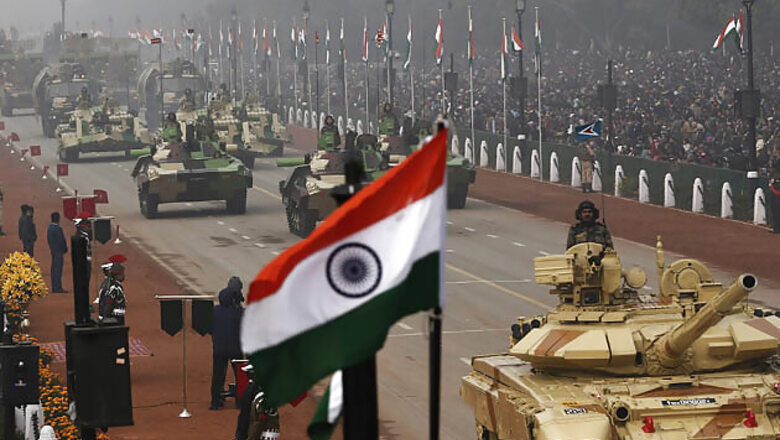
views
If inordinate delays in inducting new weapons system and shortage of officers are not enough, the Indian Army is also lacks ammunition to fight a long war. According to damming report by the Comptroller and Auditor General of India (CAG), the Indian Army has ammunition reserve to fight a full-fledged war for only 20 days against the mandatory requirement of at least 40 days.
In fact CAG only corroborates a report sent in March 2012 by the then Army Chief General VK Singh to the Government of India warning of massive shortage of ammunition reserves. According to the CAG report tabled in Parliament on Friday the Army has just 10% of ammunition whose reserves are for at least 40 days as stipulated while a massive 50% of the ammunition reserve is of just 10 days or even less.
The CAG report points out that Director General Ordnance Services (DGOS) at Army Headquarters (AHQ) is responsible for overall management of ammunition in the Army and carries out annual provisioning and procurement. While the Army is dependent on the 10 factories of Ammunition and Explosives Group under Ordnance Factory Board (OFB) for most of the ammunition and explosives, some of it is also met from imports.
Army units need to maintain a War Wastage Reserve of 40 days for all types of ammunition, but are presently managing with just the 'Bottom Line' or 'Minimum Acceptable Risk Level' (MARL) requirements which averaged to 20 days. Such a situation seriously jeopardises the fighting capabilities of the over 1.13 million strong Indian Army which faces two strong adversaries in Pakistan and China. Several Army units are also engaged in counter-insurgency operations in Jammu and Kashmir and the Northeast.
CAG says that DGOS provided for 40 days of ammunition but the Army Headquarters procured ammunition for only 20 days citing budgetary constraints and inadequate production capacity with OFB.
Even then the stock of 125 out of a total of 170 types of ammunition (74%) was way below even the 290 days reserve while many critical ammunition was available for less than 10 days. In fact such critical ammunition was just 15% in March 2009 but had risen dramatically to 50% in March 2013.
What is more worrying is that the percentage of critical ammunition in high calibre (artillery) ranged up to 84% during the five years period of audit. Such a massive shortage has also severely impacted the training as the Army needs ammunition for war and so had to curtail the supply for practice and training.
A study of five years from 2009 to 2013 shows that the number of types of ammunition has steadily decreased leading to an adverse effect on the Army's fighting capabilities. In 2009 only 15 types of ammunition had a reserve of less than 10 days but the same had increased to massive 85 in 2013. Similarly 15 types of ammunition had a reserve of 10 to 15 days in 2009 but it was 21 in 2013. Seventeen types of ammunition has a reserve of 15 to 20 days in 2009 which increased to 19 in 2013 whereas 17 types had reserve of 15 to 20 days in 2009 and it increased to 19 in 2013. Only 14 types of ammunition had a reserve of 20 to 25 days which in 2013 stood at a paltry nine putting serious question mark on both the functioning of Army and Ministry of Defence.
The types of ammunition available for war of 25 30 days was eight in 2009 and seven in 2013, four types has reserves of 30-35 days in 2009 and six in 2013, four types again had reserves of 35-40 days in 2009 which marginally increased to six in 2013 while only 24 types fulfilled the criteria of 40 days reserve in 2009 but it dropped to 17 in five years later.
The OFB has also come under criticism for failing to deliver the requisite quantity of ammunition to the Army. While the Ministry of Defence in January 2010 had placed a five year Roll on Indent on OFB to ensure ammunition stock level up to MARL and to provide enough lead time to the organisation for the same, and even the annual budget for the same had been accepted but the supply still short of the required quantity as the OFB's requirement of fund for the same was much less than the targets fixed.
Army failed to get the ammunition through imports as no procurement took place against the nine items initiated through capital route during 2008-2013 due to single vendor situation, complexities in TOT and delay in finalisation of General Staff Qualitative Requirements (GSQR), etc. In case where the import process followed the revenue route, the situation was no better and just about 20% of the ammunition could be sourced.
Another area of concern is that ammunition worth Rs 3,578 crore was lying in "segregated" condition, which means it had met an accident and the Army had imposes a ban on its use. Ammunition worth Rs 2,109 crore was also lying in "Repairable Major" condition awaiting repairs.
Army holds ammunition in three categories - service, reserves and training. While service ammunition is held as First line ammunition by the units, Reserve constitutes Second line and War Wastage Reserve (WWR). Training ammunition is authorised to each unit to maintain proficiency of the troops and formations.
While the period covered in the audit was from the financial year 2008-09 to 2012-1, it also includes data from the test audit carried out in 2013-14.
















Comments
0 comment